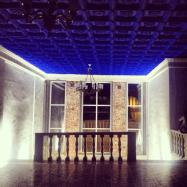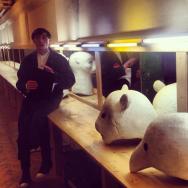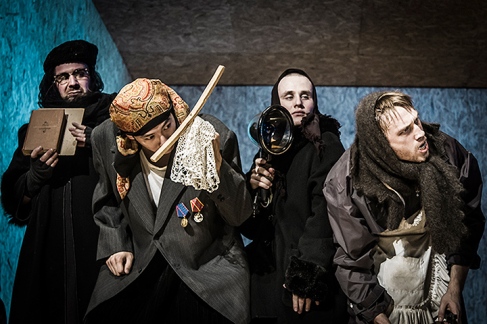About a week ago I was lucky to be at the Theatre Night in Moscow. It’s an absolutely new format of the theatre event. The majority of moscow theatres are open for visitors during all the night. There were organized a lot of interesting actions such as concerts, perfomances, exhibitions, backstage tours with participation of actors and theater employess. I was very pleased to take part in this event and I think it’s a good idea for attraction the young people’s attention to a theater life.
As you might guess I chose to visit The Gogol Center.
By 11 pm here was a huge number of people of different ages, mainly students. The fexhibition started with the story about a history of the theatre building. Originally here was a construction of the railway depot. Even today we could recognize some elements of the old building, which were deliberately saved by architects.
Then we went down to the background floor. Here was a long trip through the costume, ironing, requisite, video engineering, makeup rooms. In some of its we were met by actors with short perfomances and it greatly inspired me. We could see the theatre through the eyes of light engineers, directors, actors, decorators, etc, to feel the inside theatre life. Most of all I remember the place under the main circle on the stage. It was a dark room with a blue spot, where two guyes met visitors playing drums, reading poems and improvising. All of this created the mystical atmosphere of the night theatre life, which I remember for a long time.





